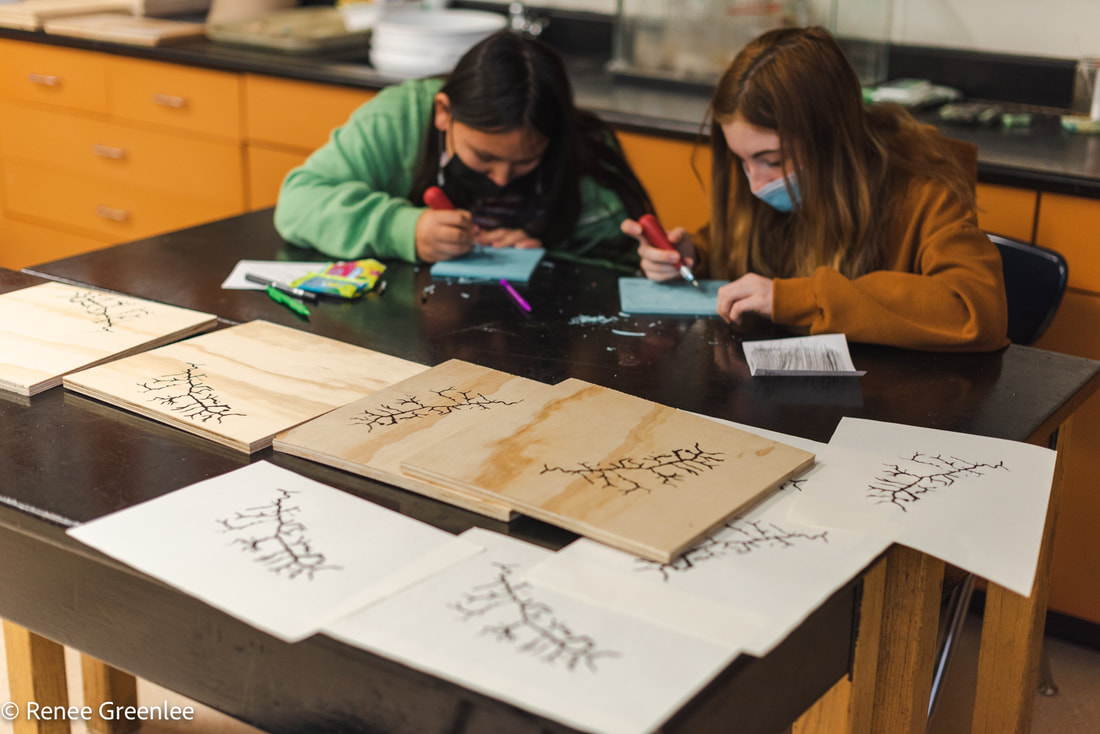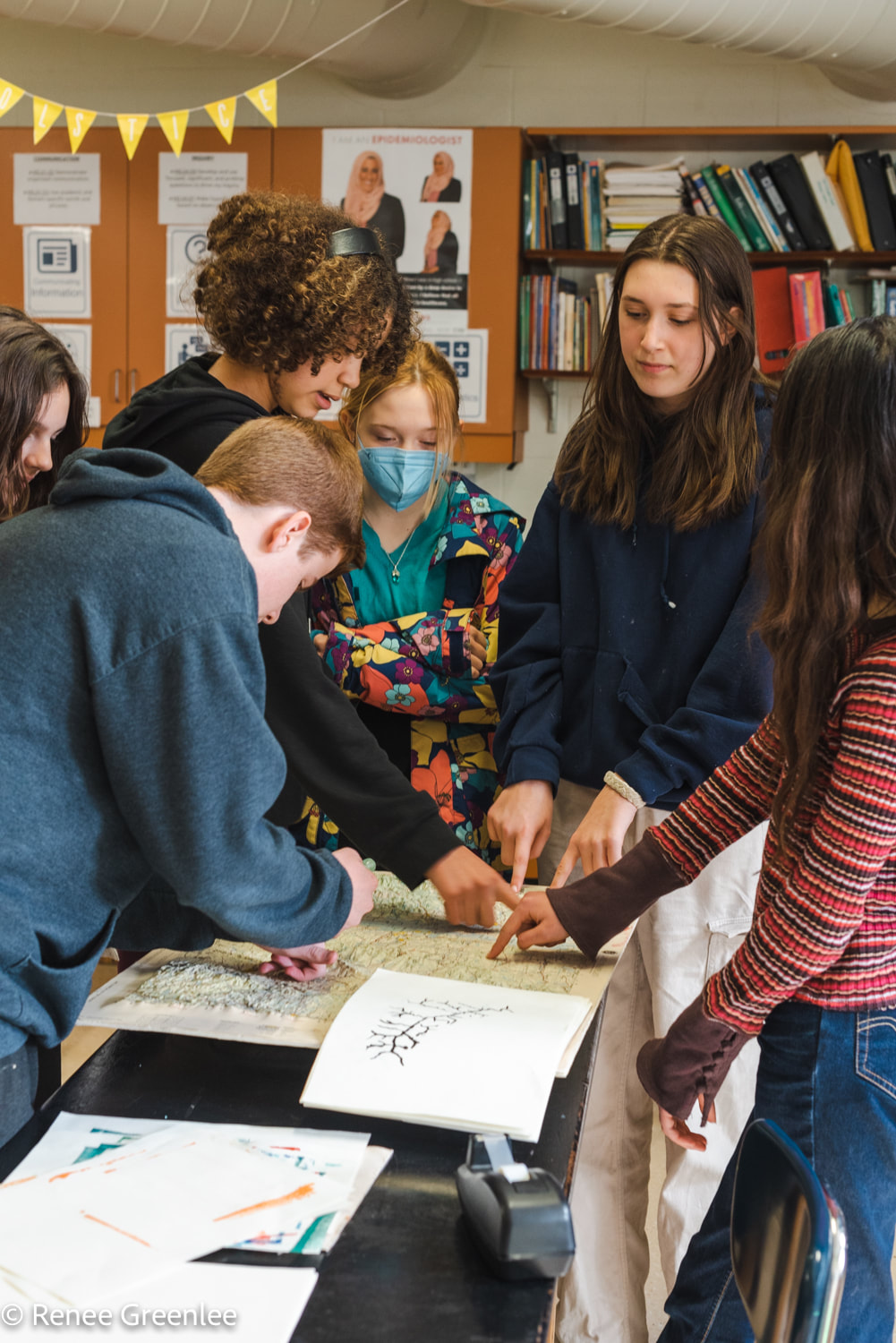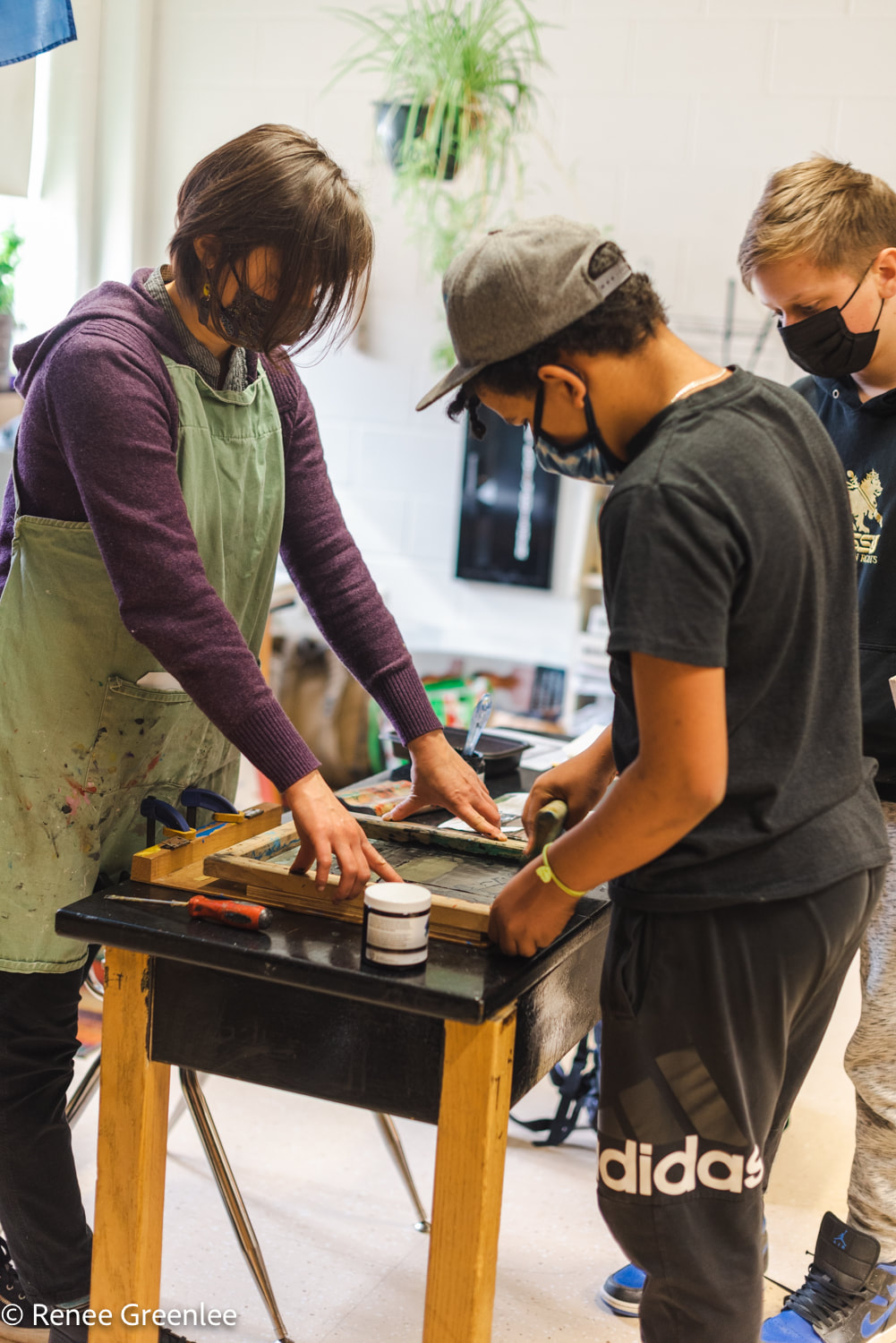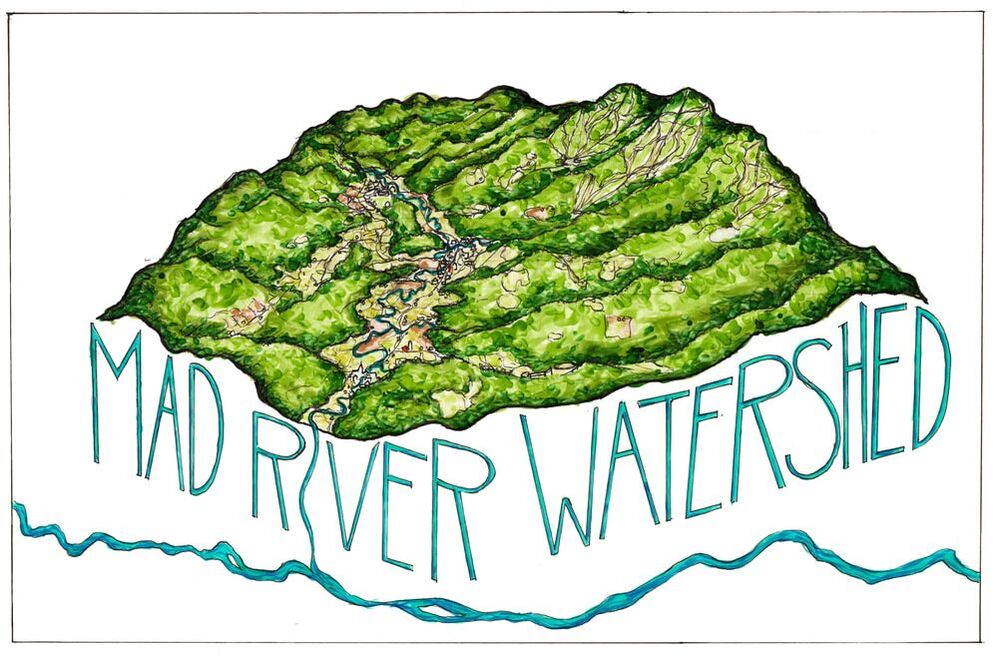|
Since October of last year, the seventh-grade students at Harwood Union Middle School have explored the web of water, and life, that surrounds their school. The exploration culminated in a month-long artist-in-residency project this March. The Watershed Project brings art and science together at schools across the greater Winooski watershed. At Harwood, this meant inviting two teaching artists, Renee Greenlee and Alissa Faber, to join up with Friends of the Mad River to design and offer a project that brings artistic expression and watershed science together. The Lozelle Brook, which runs through a wooded area behind the school and is crisscrossed by Harwood’s cross-country trails, has become the muse for the students’ artistic exploration of their place in the watershed. Throughout March, the students created watershed-inspired art that combined block prints, screen prints, and poetry. The art will be installed on wooden signs throughout the trail network at Harwood and help students and visitors learn more about Lozelle and Dowsville Brooks, both of which run through school property, as well as the wider watershed. “I used to think that the watershed was much smaller, but now I know how far it really goes,” says Harwood student Jade Lawson. “[The Watershed Project tells] the story of how the landscape changes over time, and how the life in that area changes and adapts with it, because the land, plants, creatures, and watershed are all connected,” says Harwood student Harmony Devoe. “The Harwood property is an amazing resource for implementing place-based learning. The opportunity to integrate art into our learning experience has broadened students’ understanding of the natural systems that connect us, and deepened the students’ connection to place,” says Harwood teacher Angela Selvaggio. “Having a personal connection to nature is not only good for you, but it also tends to lead to more active participation in caring for the environment,” says Friends of the Mad River Stewardship Manager Ira Shadis. “The idea of a watershed can be a little abstract. It's not always easy to picture the huge basin formed by the surrounding mountains or the path all the streams and brooks take before they reach the Mad River (and the Winooski River and Lake Champlain beyond). This is where art, storytelling, and getting outside can make a big difference.” Students at Champlain Elementary School and South Burlington High School are also engaged in the Watershed Project with support from Friends of the Winooski River. “Big topics like climate change can feel overwhelming,” says Michele Braun of Friends of the Winooski River. “This project helps students see changes in the landscape and the weather through a local lens and share information about a nearby brook with their community.”
“I want [the community] to think about where plants and animals grow and live. I want them to see that if you affect their environment, it affects them. I want them to realize that their actions count,” says Harwood student Sydney Schaller. “A place that connects us all, a place that we call home, that is the Mad River Watershed,” says Harwood student Marley Greene. The signs and artwork will be finished over the next few weeks and installed at the school this Spring. The Watershed Project was funded bу an agreement awarded bу the Great Lakes Fishery Commission to NEIWPCC in partnership with the Lake Champlain Basin Program. Comments are closed.
|
Friendsof the Mad River Archives
July 2024
Categories |
Proudly powered by Weebly





 RSS Feed
RSS Feed